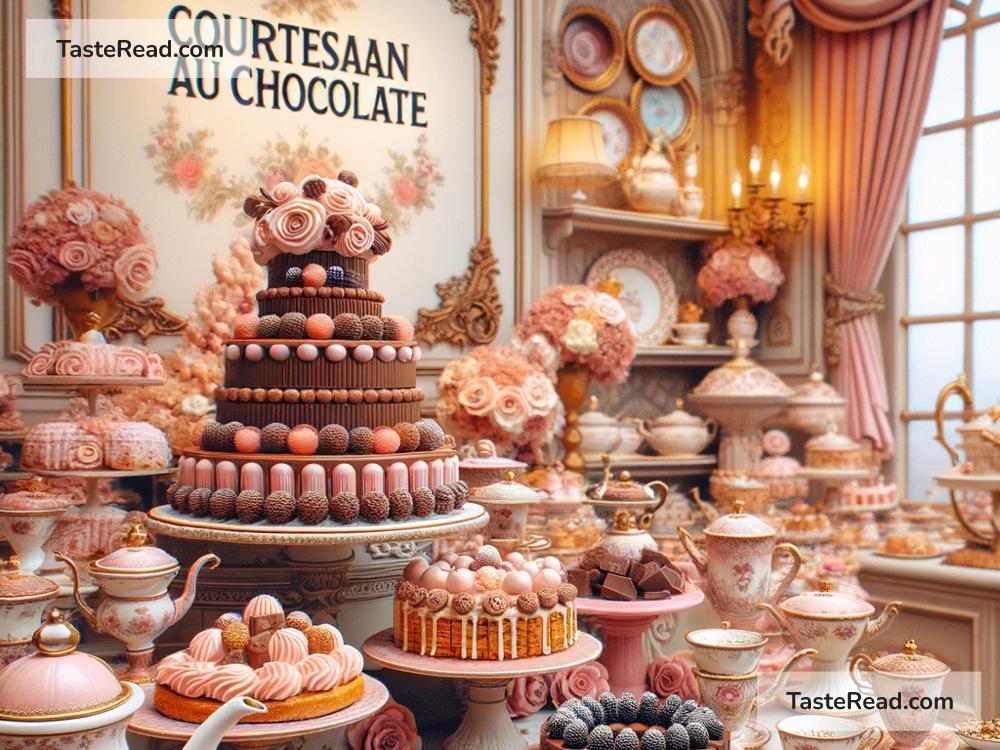Exploring Food Symbolism in The Grand Budapest Hotel
Wes Anderson is a filmmaker known for his whimsical worlds, carefully crafted visuals, and intricate storytelling. Among his many works, The Grand Budapest Hotel stands out as a colorful tale of friendship, loyalty, and the passage of time. One interesting element we can focus on throughout the film is the use of food. From delicate pastries to hearty meals, food serves not just as a visual treat but also as a powerful symbol that adds depth to the story. Let’s explore the role of food in The Grand Budapest Hotel and how it relates to the characters and themes of the movie.
Mendl’s Pastries: A Taste of Elegance and Innocence
The most famous food in the film is undoubtedly the pastries from Mendl’s, a fictional bakery. These delicate desserts, specifically the “Courtesan au Chocolat,” are beautiful, ornate, and wrapped in pastel-blue boxes tied with ribbons. They symbolize several ideas: elegance, care, and simplicity.
Throughout the film, the pastries represent moments of sweetness and trust. For example, Agatha, Zero’s love interest, works at Mendl’s and is shown preparing these delicacies with love and precision. In many ways, her connection to the pastries represents her pure heart and the kindness she brings to the story. When Zero delivers Mendl’s boxes to Gustave, it becomes an act of camaraderie and mutual support.
The pastries also contrast with the darker and more chaotic elements of the film. In a world filled with betrayal, class struggles, and violence, the neat and perfect appearance of Mendl’s treats is symbolic of sometimes fleeting beauty and joy. It reminds us that even in a troubled world, moments of delight can still exist.
Food as a Measure of Class and Status
Another way food is used as symbolism in The Grand Budapest Hotel is in showcasing differences in class and power. The movie is set in a time of political unrest and hints at the decline of luxury and privilege, especially for the upper class. Gustave, the legendary concierge of the Grand Budapest Hotel, takes great pride in the refined taste and opulence associated with the hotel.
Fine dining plays an integral role at the beginning of the film. Guests feast on elegant meals served in a grand dining room, representing the peak of privilege and sophistication. Gustave himself often quotes poetry and embraces the idea of a refined lifestyle, showing his aspiration to hold onto the traditions of this old, glamorous world.
As the story progresses and Gustave faces challenges, the luxury associated with food begins to disappear. The rich, beautiful meals of earlier scenes are replaced with prison food and scraps, showing the stark difference in circumstances. The downfall of Gustave and the changing state of the world reflect the broader decline of old European traditions and ideals. Food becomes more than just sustenance—it mirrors the shifting values of the society around it.
Food as Connection and Comfort
In The Grand Budapest Hotel, food also acts as a bridge between characters and a source of comfort. For Gustave and Zero, their shared moments involving food—like their deliveries of Mendl’s pastries—helped to strengthen their friendship. Even during tough times, the act of sharing food symbolizes care and solidarity.
Perhaps one of the most poignant examples of food as comfort is Gustave’s use of pastries to maintain connections with his wealthy lover, Madame D. He often gives her gifts, including Mendl’s desserts. His actions reveal not only his charm but also his sensitivity. For Gustave, food is an extension of the affection he shows toward others.
At the same time, the bond between Zero and Agatha is also reinforced through food. As they plot to retrieve the invaluable painting and help Gustave, their interactions with Mendl’s baked goods reflect both their resourcefulness and the sweetness of their relationship.
The Courtesan au Chocolat: A Symbol of Complexity
Among the food symbols, the “Courtesan au Chocolat” deserves special attention. This pastry is intricate and time-consuming to make, requiring beauty and precision. Its layered nature can be seen as a metaphor for the film itself. Wes Anderson’s storytelling is rich with layers—each character has a backstory, each moment holds significance, and each frame is crafted with care.
The pastry also mirrors the complexity of the film’s themes, such as loyalty, love, loss, and the search for meaning in a changing world. Just as every bite of the Courtesan introduces different flavors, every scene in the film reveals new emotions and ideas. The dessert is more than just a treat; it’s a reflection of the delicate balance that exists in life between joy and sadness.
Conclusion: Food as More Than a Detail
In The Grand Budapest Hotel, food plays a surprisingly essential role, bringing beauty, depth, and meaning to the story. From the elegant pastries of Mendl’s to the shifting meals that accompany changes in class and fortune, food is much more than a backdrop. It connects characters, highlights themes, and adds layers to Wes Anderson’s unique masterpiece.
The next time you watch this charming film, take a closer look at the food. Its symbolism will remind you that even the smallest details can hold great significance, much like the tiny, intricate pastries of Mendl’s. Through food, The Grand Budapest Hotel shows us the interplay between sweetness and sorrow, luxury and hardship, and connection and isolation—all within a beautifully crafted cinematic world.


